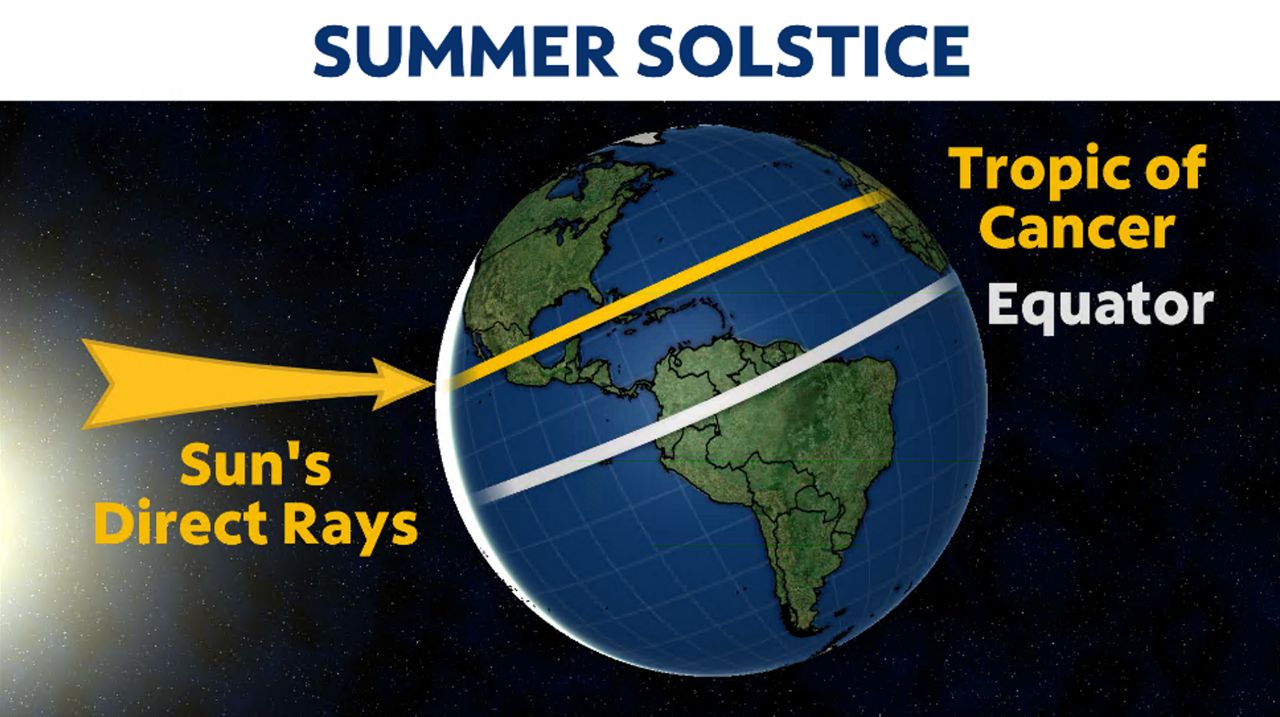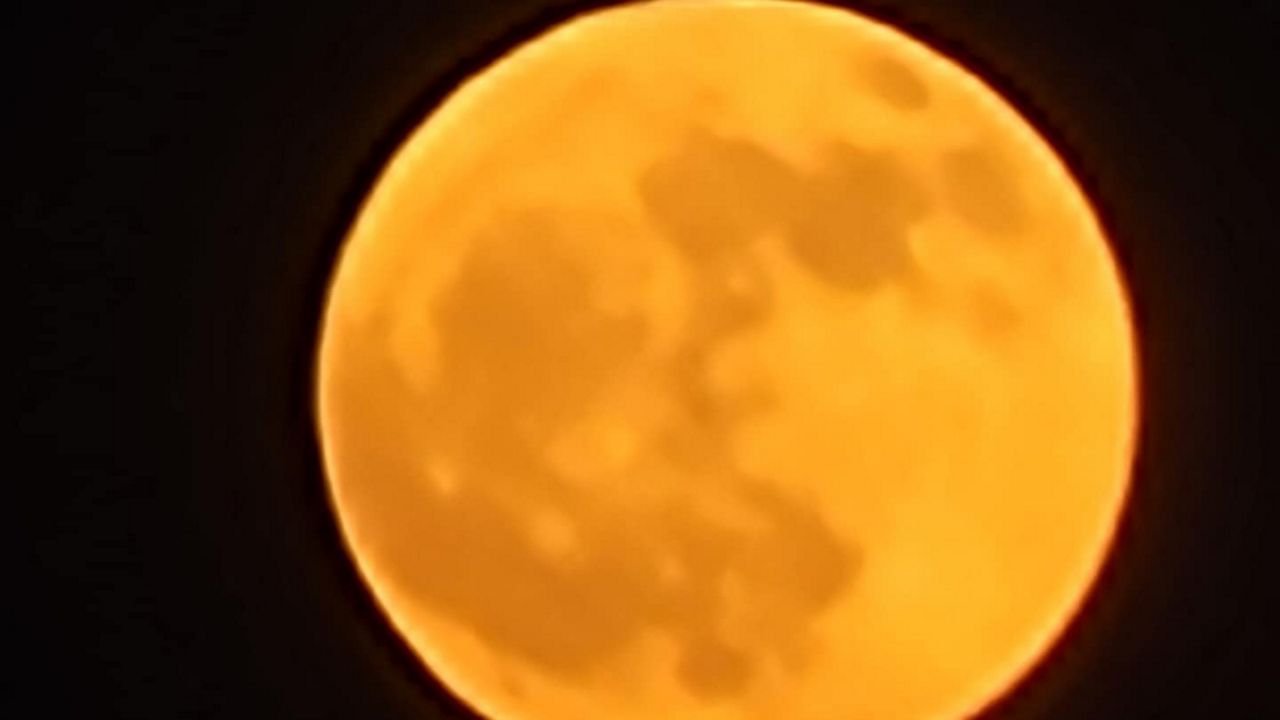Most of the country has experienced summer-like temperatures this week, with nearly 85% seeing readings above 90 degrees. The official astrological start to summer happens Thursday afternoon.
It takes the Earth 365 ¼ days to revolve around the sun. The sphere of the Earth does not wobble perpendicular to the plane it is moving, it is tilted by 23.5 degrees.
It’s thanks to this tilt that we have seasons. The northern and summer hemispheres will be tilted toward and away from the sun at different intervals of the year.
Summer solstice occurs when a hemisphere is turned toward the sun.
The summer solstice occurs in the northern hemisphere annually on June 20 or 21. It is when the sun is directly over the Tropic of Cancer and is located the farthest north in the sky.

The days closest to the summer solstice have the most daylight and are known as the year's longest days. This year summer will begin in the northern hemisphere on June 20 at 4:51 p.m. EST, marking it the earliest start to the season since 1796, when George Washington was president, according to the U.S. Naval Observatory.
The full strawberry moon is expected to peak Friday evening and will appear brighter and larger than usual, says Spectrum News’ Space Expert Anthony Leone.
This will be the first time since 1988 that the first June full moon occurs during summer. However, two years in recent history came close.
June 2016’s full moon occurred on the date of the solstice, but during the morning hours so not officially summer, since the solstice did not happen until that night. June 1996 had two full moons that month; technically, one of those moons occurred during the summer.
But two full moons in a month categorize the second one as a blue moon (that’s where the saying, “once in a blue moon” comes from), meaning 1996’s strawberry moon occurred early in the month during late spring.
One would think that if it’s nick-named “strawberry” moon, it should appear with a reddish hue, but it depends on where you live, says Leone.
The name of the moon was deemed as such thanks to the Native American Algonquian tribes that lived in the northeast part of the United States. It was to mark the time when the fruit, strawberries, were ripe.
Other tribes, such as the Ojibwe, Dakota and Lakota, reflect this as well. According to NASA, an old European name for this moon is the Mead or Honey Moon to account for the harvest of honey. Some even say that’s where the term “honeymoon” came from because of the custom of marrying in June.
The full moon is opposite the sun and will rise just as the sun is setting and inversely set when the sun is rising. With the sun at the highest point north, this means the moon will be at the lowest, making it appear larger.
The Old Farmers’ Almanac refers to this as the “Moon Illusion.” Thanks to its low position, it will have more atmosphere to pass through, says Leone.
"Depending on where you are in the world, the moon could appear reddish, like a strawberry, when it is close to the horizon." Adding, "the best time to see it is when it is rising, before it becomes its usual goldish or silvery color as it climbs the evening sky."
He recommends downloading the app "Moon" to find out when it rises from your location. The full strawberry moon will rise Friday at 10:07 p.m. EST.
Our team of meteorologists dives deep into the science of weather and breaks down timely weather data and information. To view more weather and climate stories, check out our weather blogs section.



